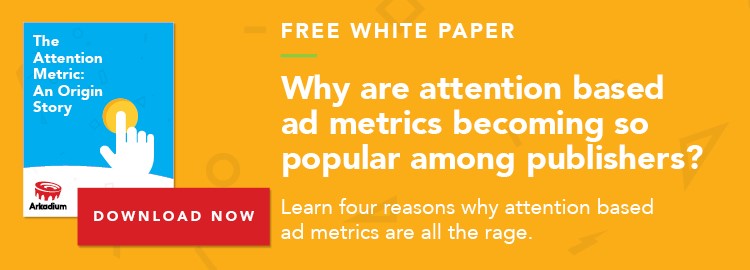Facebook Instant Articles: A Publisher’s Dilemma

In May 2015, Facebook released Instant Articles which enables users to read entire articles within the social network. Upon its release, Facebook also promised a 20% increase in reads and 30% increase in shares.1
Promises aside, digital publishers had their concerns.
First and foremost, they were wary about diminished traffic. Considering that Facebook accounted for roughly 45% of all digital publishing traffic in 2015, Instant Articles, which prevents users from linking to the publishers’ domains, had many feeling a wee bit less optimistic than Facebook.2
Secondly, Instant Articles’ advertising model may very likely diminish publishers’ monetization. The new platform enables publishers to have Facebook directly sell ads, with 70% going to the publisher. Or, publishers can directly sell ad space within the articles, allowing the publisher to retain all revenue generated.
Encouraging? Yes. But there’s a catch.
Because it places publishers within the same market space, supply exceeds demand, causing publishers to receive lower eCMP bids than they are realizing on their own properties. Which likely means less monetization.
Although there are well documented concerns, publishers who have opted into Instant Articles have realized a number of benefits.
Several digital publishers using Instant Articles, including The Atlantic, Buzzfeed, National Geographic, and NBC News, report that their aggregated Instant Article posts have received an average user engagement rate 4.3 times higher than their normal posts.3 Users are also 70% less likely to bounce from Instant Articles, likely because they are not having to wait for slow loading pages.4
Learn three reasons why more and more publishers are embracing engaging content.
In a more detailed look at The New York Times, a study performed by NewsWhip found that their Instant Articles delivered significant user engagement: 3.5 times more shares, 2.5 times more likes, and 5.5 times more comments than regular posts.5
Instant Articles also provides digital publishers a more in depth understanding of what content they should be promoting to users, when; Facebook’s own analytics tools provide detailed insights on article reach, time spent on each article, and user engagement with photos and videos. And publishers are taking advantage.
The New York Times has begun posting specific types of articles in the Instant format based on which content garnered the highest user engagement.6
Beyond higher user engagement rates, some publishers, including The Atlantic, are realizing an opportunity to monetize with Facebook Instant Articles as a distributor of sponsored content. Kimberly Lau, VP and Digital GM of The Atlantic, stated, “With 60-plus percent of our digital revenue tied to sponsor content, it is important that we have similar capabilities to publish and promote natively in the format.7
While some digital publishers are still weary of Instant Articles, Sean Cullen, EVP of Product and Technology at Fluent has a thought-provoking take. “Facebook Instant Articles is neither an ally nor a threat since the war is already over, and Facebook won. Publishers have no choice but to adopt Instant Articles in order to maintain their existing traffic levels and many will have no choice but to buy advertising from Facebook to grow.”8
Interesting, indeed.
1. Lopez, Napier. “Facebook Instant Articles Are Now Available to Any Publisher.” The Next Web. N.p., 12 Apr. 2016. Web. 30 May 2016.
2. Ingram, Mathew. “Facebook Has Taken over from Google as a Traffic Source for News.” Fortune Facebook Has Taken over from Google as a Traffic Source for News Comments. N.p., 17 Aug. 2015. Web. 30 May 2016.
3. Kantrowitz, Alex. “Early Numbers Suggest Facebook Instant Articles Giving Participating Publishers An Edge.” BuzzFeed. N.p., 12 June 2015. Web. 30 May 2016.
4. Walters, Kendall. “Why We’re Trying Facebook Instant Articles.” Hootsuite, 12 Apr. 2016.
5. Corcoran, Liam. “Instant Articles are Shared Three Times More Than Regular Links.” NewsWhip, 13 Nov. 2015.
6. IBID
7. “Publishers Talk About Using FB Instant Articles; Vice’s Cable Channel Will Have Native Ads.” AdExchanger. N.p., 02 Mar. 2016. Web. 30 May 2016.
8. Lu, Anne. “Facebook Instant Articles: When Publishers Finally Embrace This New Platform.” International Business Times, 30 May 2016.


